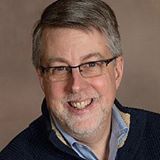Nanotechnology in Grove City: Part Three

Nanostructures- Micrometers-wide Bridges Dr. Wolinski of the Grove City College Physics Department leads a study on the development and uses of Gallium Oxide nanowires. Six young men of the department work week after week tuning machines and making discoveries on the possibility of building bridges micrometers wide. Part three concludes the process (as of current) with Kaleb Slaatthaug and Michael […]
Read more